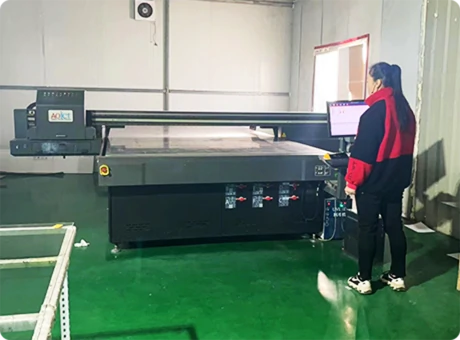The Benefits and Applications of Tempered Glass
Tempered glass, also known as toughened glass, has become an indispensable material in various industries due to its enhanced strength and safety features. This innovative glass product is manufactured through a process of extreme heating and rapid cooling, resulting in a material that is much stronger than standard glass. In this article, we will explore the benefits and applications of tempered glass, emphasizing its significance in modern architecture, automotive design, and consumer products.
What is Tempered Glass?
Tempered glass is produced by heating standard glass to over 600 degrees Celsius and then rapidly cooling it. This process creates balanced internal stresses within the glass, making it approximately five to six times stronger than non-tempered glass of the same thickness. The strength of tempered glass not only helps resist the impact of physical forces but also enhances its ability to withstand thermal stress. This makes it an ideal choice for environments where thermal fluctuations are common.
Benefits of Tempered Glass
1. Safety One of the most notable advantages of tempered glass is its safety features. When shattered, tempered glass breaks into small, blunt pieces rather than sharp shards, significantly reducing the risk of injury. This property makes tempered glass an excellent choice for environments with high foot traffic or where safety is a primary concern, such as homes, schools, and public buildings.
2. Durability The enhanced strength of tempered glass means it can withstand a considerable amount of stress without breaking. It is much less likely to crack or chip compared to regular glass, resulting in long-lasting installations. This durability is particularly beneficial in commercial settings where frequent use and potential impacts are a concern.
3. Thermal Resistance Tempered glass can endure higher temperature variations compared to regular glass. This feature is especially useful for applications such as shower doors, glass railings, and windows in buildings exposed to harsh weather conditions. The ability to avoid thermal stress-related breakage ensures the longevity and integrity of architectural designs.
glass tempered glass
4. Aesthetic Appeal Aside from its physical properties, tempered glass offers aesthetic advantages. It is available in various finishes, including clear, tinted, and frosted, allowing for creative design possibilities. This versatility is why architects and designers often choose tempered glass for modern structures, enhancing the overall appearance and functionality.
Applications of Tempered Glass
1. Architecture and Construction Tempered glass is widely used in building facades, windows, and doors. Its ability to withstand wind pressure and provide thermal insulation makes it an ideal choice for high-rise buildings and glass curtain walls. Architects appreciate the transparency and sleek look it offers, contributing to the modern aesthetic of contemporary architecture.
2. Automotive Industry The automotive industry utilizes tempered glass for side and rear windows due to its safety and strength. Considerably reducing the risk of injury in the event of an accident, tempered glass plays a vital role in enhancing vehicle safety standards. Additionally, the automotive sector benefits from the light-weight nature of tempered glass, contributing to improved fuel efficiency.
3. Interior Design In the realm of interior design, tempered glass is frequently used for shower doors, glass partitions, and tabletops. Its elegant appearance, combined with its durability, makes it a favored choice for luxury home designs and commercial spaces, providing an open yet refined ambiance.
4. Consumer Products Beyond architecture and automotive applications, tempered glass is increasingly found in consumer products like smartphone screens and kitchenware. Its resistance to breakage and scratches makes it ideal for screens that need to endure daily wear and tear.
Conclusion
Tempered glass is a remarkable material that combines safety, durability, and aesthetic appeal, making it a top choice in various industries. Its transformative properties stem from a meticulous manufacturing process that enhances the material's performance under stress and heat. As technology advances and demands for higher safety and design standards increase, tempered glass will undoubtedly continue to play a critical role in the innovation and functionality of modern products and structures. Whether in the construction of skyscrapers, the design of vehicles, or the crafting of everyday items, tempered glass is a testament to human ingenuity and the pursuit of safety and style.
 Afrikaans
Afrikaans  Albanian
Albanian  Amharic
Amharic  Arabic
Arabic  Armenian
Armenian  Azerbaijani
Azerbaijani  Basque
Basque  Belarusian
Belarusian  Bengali
Bengali  Bosnian
Bosnian  Bulgarian
Bulgarian  Catalan
Catalan  Cebuano
Cebuano  Corsican
Corsican  Croatian
Croatian  Czech
Czech  Danish
Danish  Dutch
Dutch  English
English  Esperanto
Esperanto  Estonian
Estonian  Finnish
Finnish  French
French  Frisian
Frisian  Galician
Galician  Georgian
Georgian  German
German  Greek
Greek  Gujarati
Gujarati  Haitian Creole
Haitian Creole  hausa
hausa  hawaiian
hawaiian  Hebrew
Hebrew  Hindi
Hindi  Miao
Miao  Hungarian
Hungarian  Icelandic
Icelandic  igbo
igbo  Indonesian
Indonesian  irish
irish  Italian
Italian  Japanese
Japanese  Javanese
Javanese  Kannada
Kannada  kazakh
kazakh  Khmer
Khmer  Rwandese
Rwandese  Korean
Korean  Kurdish
Kurdish  Kyrgyz
Kyrgyz  Lao
Lao  Latin
Latin  Latvian
Latvian  Lithuanian
Lithuanian  Luxembourgish
Luxembourgish  Macedonian
Macedonian  Malgashi
Malgashi  Malay
Malay  Malayalam
Malayalam  Maltese
Maltese  Maori
Maori  Marathi
Marathi  Mongolian
Mongolian  Myanmar
Myanmar  Nepali
Nepali  Norwegian
Norwegian  Norwegian
Norwegian  Occitan
Occitan  Pashto
Pashto  Persian
Persian  Polish
Polish  Portuguese
Portuguese  Punjabi
Punjabi  Romanian
Romanian  Russian
Russian  Samoan
Samoan  Scottish Gaelic
Scottish Gaelic  Serbian
Serbian  Sesotho
Sesotho  Shona
Shona  Sindhi
Sindhi  Sinhala
Sinhala  Slovak
Slovak  Slovenian
Slovenian  Somali
Somali  Spanish
Spanish  Sundanese
Sundanese  Swahili
Swahili  Swedish
Swedish  Tagalog
Tagalog  Tajik
Tajik  Tamil
Tamil  Tatar
Tatar  Telugu
Telugu  Thai
Thai  Turkish
Turkish  Turkmen
Turkmen  Ukrainian
Ukrainian  Urdu
Urdu  Uighur
Uighur  Uzbek
Uzbek  Vietnamese
Vietnamese  Welsh
Welsh  Bantu
Bantu  Yiddish
Yiddish  Yoruba
Yoruba  Zulu
Zulu 

